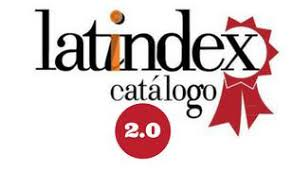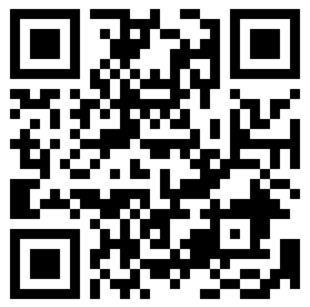Spontaneous green spaces. Analysis of factors that promote its emergence
Keywords:
online survey, urban green spaces, COVID19 pandemic, urban planning, geographic information systemAbstract
Both green and public spaces are used by residents for recreation, entertainment, and socializing. Among Bahia Blanca city's parks, Parque de Mayo and Parque Independencia stand out, as well as the number of squares that are scattered throughout its surface, whose characteristics don't always meet the needs of the people. As a result, residents of the city have spontaneously opted for unplanned spaces for these purposes. Some authors define these places as spontaneous sociocultural spaces or simply spontaneous use spaces, which can be permanent or punctual and arise from the dynamics or requirements of the population at a given time.
Our study aims to identify the urban and suburban green spaces that Bahía Blanca residents spontaneously incorporate for recreational purposes, as well as the factors that influence their decisions. An online survey was conducted to gather data for analysis. The data was analyzed using a GIS (Geographic Information System). The GIS was used to manage and analyze geospatial data, which is essential for understanding and visualizing spatial relationships and patterns. As a secondary objective, we analyzed whether the COVID-19 Pandemic was decisive in choosing these places.
It has been identified that a significant portion of the population prefers to use road shoulders and access routes to the city, with the Road known as Carrindanga in the northeast sector and National Route 3 in the south of the city, being particularly popular. The decision to choose a certain place often depends on various factors, including the size, accessibility, and number of people present. In this case, the main reasons for selecting these locations are the spaciousness of the place, being able to access it by car, and the low number of people. However, it is important to consider the influence of the COVID-19 pandemic on the popularity of certain places. The answers of the 70% of the surveys showed that people visited those locations before the restrictions associated with the pandemic were put in place. This suggests that the health crisis may have contributed to an increase in the number of people electing to visit these types of locations.
Downloads
References
Aerts, R., Vanlessen, N. & Honnay O. (2021). Exposure to green spaces may strengthen resilience and support mental health in the face of the covid-19 pandemic. BMJ 373 (1601). https://doi.org/10.1136/bmj.n1601
Agencia de Recaudación provincia de Buenos Aires. https://web.arba.gov.ar/ recuperado 2023.
Alcock, I., White, M., Wheeler B. Fleming L. & Depledge, M. (2014). Longitudinal effects on mental health of moving to greener and less green urban areas. Environ Sci Te-chnol. 48(2):1247-55. https://doi.org/10.1021/es403688w
Almohamad, H., Knaack, A. L., & Habib, B. M. (2018). Assessing spatial equity and accessibility of public green spaces in Aleppo City, Syria. Forests, 9(11). https://doi.org/10.3390/f9110706
Arroyo Menéndez, M. & Finkel, L. (2019). Encuestas por Internet y nuevos procedimientos muestrales. Panorama Social 30. 41-53. https://eprints.ucm.es/id/eprint/58785/
Bahriny, F. & Bell, S. (2020). Patterns of urban park use and their relationship to factors of quality: A case study of Tehran, Iran. Sustainability (Switzerland), 12(4), 1–33. https://doi.org/10.3390/su12041560
Cantar, N. & Rojas Chediac, J, (2022). Usos y apropiaciones del espacio verde público en tiempos de COVID-19. Análisis de dos casos: las ciudades de La Plata y Olavarría. Revista de Estudios Marítimos y Sociales, 21. pp 91-114. https://www.researchgate.net/publication/362928451_Usos_y_apropiaciones_del_espacio_verde_publico_en_tiempos_de_COVID-19_Analisis_de_dos_casos_las_ciudades_de_La_Plata_y_Olavarria
Clichevsky, N. (2009). Algunas reflexiones sobre informalidad y regularización del suelo urbano. Bitácora urbano territorial, 14(1), 63-88. https://revistas.unal.edu.co/index.php/bitacora/article/view/18508
Davies, C. & Sanesi, G. (2022). COVID-19 and the importance of urban green spaces. Urban For Urban Green 74, 127654. doi:10.1016/j.ufug.2022.127654
De la Torre, M. (2015). Espacio público y colectivo social. Nova Scienti, 7(14) 495-510. https://www.redalyc.org/comocitar.oa?id=203338783026
Decreto Ley 8912. Ley de ordenamiento territorial y uso del suelo. Provincia de Buenos Aires. Argentina. 24 de Octubre de 1977. https://normas.gba.gob.ar/documentos/5B3DztjV.html
Decreto 297/2020. ASPO. Aislamiento Social Preventivo y Obligatorio. Ciudad de Buenos Aires. Argentina. 19 de Marzo de 2020. https://www.boletinoficial.gob.ar/detalleAviso/primera/227042/20200320
Durán, F. (2021). Calidad ambiental de los parques urbanos de la ciudad de Bahía Blanca. [Tesis de pregrado, Universidad Nacional Del Centro de la Provincia de Buenos Aires, Argentina]. https://www.ridaa.unicen.edu.ar/handle/123456789/3181
Feiber, S. D. (2004). Áreas Verdes Urbanas Imagem e Uso – o Caso Do Passeio Público de Curitiba-PR. RA’E GA - O Espaco Geografico Em Analise, 8(8), 93–105. http://doi.org/10.5380/raega.v8i0.3385
Formiga, N. & Ercolani, P. (1997). Las áreas recreativas en los espacios periurbanos. El caso de Bahía Blanca. Argentina. Simposio: las actividades turísticas y el espacio geográfico. Quito Ecuador. https://www.equiponaya.com.ar/congresos/contenido/49CAI/Ercolani.htm
Garriz, E. & Schroeder, R. (2014). Dimensiones del espacio público y su importancia en el ámbito urbano. Científica Guillermo de Ockham, 12 (2), 25-30. https://revistas.usb.edu.co/index.php/GuillermoOckham/article/view/59/233
Gómez, N. & Velázquez, G. (2018). Asociación entre los espacios verdes públicos y la calidad de vida en el municipio de Santa Fe, Argentina. Cuad. Geogr. Rev. Colomb. Geogr. 27 (1). https://doi.org/10.15446/rcdg.v27n1.58740
Instituto Nacional de Estadística y Censos. (2010). Censo Nacional de Población, Hogares y Vivienda 2010. Índice de Cuadra, Resultados definitivos. Buenos Aires, Argentina. https://www.indec.gob.ar/indec/web/Nivel4-Tema-2-41-135
Instituto Nacional de Estadística y Censos. (2022). Censo Nacional de Población, Hogares y Vivienda 2022. Índice de Cuadra, Resultados definitivos. Buenos Aires, Argentina. https://www.indec.gob.ar/indec/web/Nivel4-Tema-2-41-165
Jensen, K. & Bilbao, P. (2021). La desigualdad en el acceso a los espacios públicos como espacio social y los cambios en el paisaje urbano durante el COVID-19. El caso del partido de La Plata, Buenos Aires, Argentina. XIV Jornadas de la carrera de sociología. Facultad de Ciencias Sociales, Universidad de Buenos Aires, Buenos Aires. https://cdsa.aacademica.org/000-074/420.pdf
La Nueva a. (2020, 17, Marzo). Cierran los parques y plazas de Bahía. https://www.lanueva.com/nota/2020-3-17-14-15-0-cierran-los-parques-y-plazas-de-bahia
La Nueva b. (2020, 13, Septiembre). En imágenes: parques y paseos, a 179 días del inicio de la pandemia. https://www.lanueva.com/nota/2020-9-13-20-40-0-en-imagenes-parques-y-paseos-a-179-dias-del-inicio-de-la-pandemia
La Nueva c. (2023, 2, Marzo). Lanzaron la licitación para la reforma del acceso al Parque de Mayo. https://www.lanueva.com/nota/2023-3-2-16-0-41-lanzaron-la-licitacion-para-la-reforma-del-acceso-al-parque-de-mayo
Ley 12.704. Senado y cámara de Diputados de la Provincia de Buenos Aires. Argentina. 20 de Junio de 2001. https://intranet.hcdiputados-ba.gov.ar/refleg/l12704.pdf
Luque, T. & Castañeda, J. (2004). Diseños de investigación comercial en internet: oportunidades y limitaciones. Investigación y Marketing, 84, 20-28. https://www.researchgate.net/publication/275043413_Investigacion_comercial_y_marketing_turistico
Mandolesi, M. (2015). Los espacios verdes como recursos turísticos complementarios del turismo urbano. Estudio de caso: el Parque de la Independencia de la ciudad de Bahía Blanca. (Tesis de Grado). Universidad Nacional del Sur. Bahía Blanca. Argentina. http://repositoriodigital.uns.edu.ar/handle/123456789/3368
MiTelefé. (2020, 6, Septiembre). En medio de un abrupto aumento de contagios, "explotó" el Paseo. https://bahia.mitelefe.com/locales/en-medio-de-un-abrupto-aumento-de-contagios-explota-el-paseo/
Naciones Unidas. (2015). Objetivos de Desarrollo Sostenible. https://www.un.org/sustainabledevelopment/es/
Nucci, J. C. (2008). Qualidade Ambiental E Adensamento Urbano: um estudo de ecologia e planejamento da paisagem aplicado ao distrito de Santa Cecília (MSP). 2° Ed. Curitiba. https://tgpusp.files.wordpress.com/2018/05/qualidade-ambiental-e-adensamento-urbano-nucci-2008.pdf
Pizzichini, C., Aldalur, B., & Sisti, J. M. (2017). Técnicas de geomática aplicadas al estudio de los espacios verdes en Bahía Blanca, Argentina. VIII Convención Agrimensura (La Habana, Cuba, 26 al 30 de septiembre de 2017).
Pizzichini, C. & Sisti, J. (2021). Análisis de la relación entre espacios verdes y población de la ciudad de Bahía Blanca, Argentina. Posición. Revista del Instituto De Investigaciones Geográficas 5, 1–26. https://posicion-inigeo.unlu.edu.ar/posicion/article/view/93
Ranger Mora, M. (2009). Indicadores de calidad de espacios públicos urbanos, para la vida ciudadana, en ciudades intermedias. 53° Congreso Internacional de Americanistas. http://www.saber.ula.ve/bitstream/handle/123456789/33817/indicadores_calidadespacio.pdf;jsessionid=FA84E48014BD451860BB90466FDE0C8B?sequence=1
Rodríguez Tarducci, R.; Birche, M. & Cortizo, D. (2021). Análisis del espacio público frente a la pandemia en una urbanización informal argentina. Revista de urbanismo, (44), 96-111. https://dx.doi.org/10.5354/0717-5051.2021.58512
Roldán, D. & Pagnoni, A. (2022). La producción y reformulación del espacio público en Rosario, Argentina. Diseño, usos, circuitos y pandemia. Ciudades, estados y política, 9(2), 15–32. https://doi.org/10.15446/cep.v9n2.98382
Rosake, P. & Ercolani, P. (2012). Los espacios de ocio de Bahía Blanca: preferencias de la población en relación al uso de su tiempo libre. Realidad, tendencias y desafíos en turismo. 12 (10). https://revele.uncoma.edu.ar/index.php/condet/article/view/2580
Röbbel, N. (2016). Los espacios verdes: un recurso indispensable para lograr una salud sostenible en las zonas urbanas. Crónica ONU. https://www.un.org/es/chronicle/article/los-espacios-verdes-un-recurso-indispensable-para-lograr-una-salud-sostenible-en-las-zonas-urbanas.
Schroeder, R. & Garriz, E. (2009). ¿Es posible recuperar el espacio público? La ciudad de Bahía Blanca como caso de estudio. XII Encuentro de Geógrafos de América Latina, 3-7. http://www.observatoriogeograficoamericalatina.org.mx/egal12/Geografiasocioeconomica/Geografiaurbana/208.pdf
Tella, G. & Potocko, A. (2009). “Espacios verdes públicos: Una delicada articulación entre demanda y posibilidades efectivas”. En: Buenos Aires, Revista Mercado y Empresas para Servicios Públicos 55, Ed. IC Argentina, 40-55. https://www.guillermotella.com/articulos/los-espacios-verdes-publicos-una-delicada-articulacion/
Urriza, G. (2016). Expansión urbana, tierra vacante y demanda habitacional en Bahía Blanca. Modelos de ciudad y política urbana en debate. Quid16. Revista del Área de Estudios Urbanos. https://publicaciones.sociales.uba.ar/index.php/quid16/article/view/2089/1777
Trujillo Carmona, M. (2019). El futuro de las encuestas en la investigación Social. Working Paper. XIII Congreso Nacional de Sociología. Valencia.
Valarezo, S., Castillo, M. & Alvarado, L. (2022). El verde urbano público.: Dotación, Distribución y Accesibilidad. Caso de estudio Loja – Ecuador. PENSUM, 8(8), 55–71. https://doi.org/10.59047/2469.0724.v8.n8.34668
WIPS (2021, 14, Abril). Preocupan los autos estacionados en zonas prohibidas en el Paseo de la Mujer y La Carrindanga. https://wips.digital/2021/04/14/actualidad/preocupa-la-cantidad-autos-estacionados-en-zonas-prohibidas-en-el-paseo-de-la-mujer-y-la-carrindanga/
Published
How to Cite
Issue
Section
ARK
License
Copyright (c) 2023 Boletín GeográficoTransfer of rights and data processing
The acceptance of an article for publication in the Journal Geographic Bulletin implies the cession of the rights of printing and reproduction, by any means and means, of the author in favor of the Department of Geography of the National University of Comahue, which will not reject any request reasonable for the authors to obtain permission to reproduce their contributions. The total or partial reproduction of the works published in the Geographic Bulletin must be done citing the origin, otherwise, the copyright is violated.
Likewise, it is understood that the concepts and opinions expressed in each work are the sole responsibility of the author, without being responsible or in solidarity, necessarily, neither the editorial staff nor the editorial staff.
It is the responsibility of the authors to be able to provide interested readers with copies of the raw data, procedure manuals, scores and, in general, relevant experimental material.
Likewise, the Management of the journal guarantees the appropriate treatment of personal data
COPYRIGHT TRANSFER FORM

















 Journal of the
Journal of the 